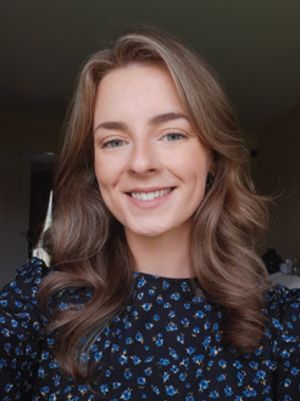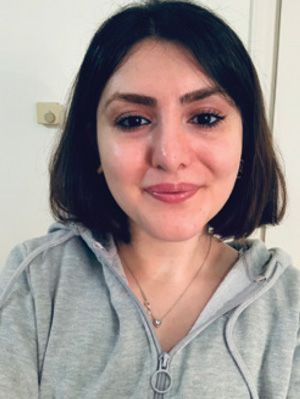UCD Research - October 2021
Monitoring Surface Water in Public Amenity Areas: A One Health Approach
Water is an important natural asset and surface waters sustain important ecological systems while providing a habitat for many different biological communities. If not managed properly, it may serve as a reservoir and source of pollutants (physical, chemical, and biological) that are hazardous to health. This fact highlights the important link to the One Health concept that human health, animal health, and environmental health are all innately interrelated.
In association with


Chloe Maloney
Stage 3, BSc Honours Veterinary Nursing undergraduate.

Shermin Shahriari
Stage 2, Graduate entry Veterinary Medicine
The EU Water Framework Directive sets minimum quality standards for surface water. With this in mind, two students from the UCD School of Veterinary Medicine, Chloe Maloney, Stage 3, BSc Honours Veterinary Nursing undergraduate and Shermin Shahriari, Stage 2, Graduate entry Veterinary Medicine, carried out a summer research project sponsored by the School and supervised by Dr Sandra Aungier and Associate Professor Theo De Waal, respectively. The aim of the project was to investigate the presence of the potentially zoonotic pathogens, such as Escherichia coli, in water bodies in the greater Dublin area.
One of these water bodies employed a reed bed filtration system and so the effectiveness of the reed bed in supporting water quality was also assessed. The project also aimed to promote the development of the students interprofessional skills through sharing and utilising their specialist skill sets and knowledge backgrounds throughout the project.
Results
During the study, weekly water samples were collected from the water bodies and subjected to microbiological analysis using routine culture methods for identification of E. coli and testing for antimicrobial resistance. The MALDI-TOF Mass Spectrometer (Biomerieux, France) was used for the rapid and accurate identification of different bacteria. E. coli was identified in all the samples and the results further highlighted that there was a high level of resistance by E. coli to certain antibiotics which are also used in human medicine. This demonstrates how antibiotic-resistant E. coli can be potentially present in any water body accessible to both humans and animals. The water quality of each sample was analysed using a Lovibond MD600 analyser (Lovibond, Germany). All the water parameters analysed were found to be within acceptable limits for surface water. Copper and ammonia were two exceptions, both of which exceeded the surface water acceptable limits. The trace element copper is a micronutrient at low concentrations and is essential to virtually all plants and animals. At higher concentrations, copper can become toxic to aquatic life. A high ammonia concentration due to plant and animal death and decay is to be expected. However, the resulting levels of nitrates are low, indicating sufficient plant uptake. Therefore, the reed bed filtration system in the water bodies appeared to be generally effective in preserving water quality. Furthermore, faecal samples collected from resident wild water birds, namely seagulls, mallard ducks and whooper swans, were analysed for the zoonotic protozoan parasites, Cryptosporidium, Giardia, and Entamoeba. Cryptosporidium was identified in swan and seagull samples while Giardia was found in a duck sample. The water bodies examined in this pilot study are all public amenities visited by people and their dogs. Therefore, due to the zoonotic nature of the parasites, water birds may play an important role in the contamination of water sources with these parasites.
Student insights:working together as an Interprofessional team
Chloe:
“It is standard practice that both veterinary surgeons and veterinary nurses work together in the clinical setting. However, this may not be standard practice for student research projects. Our interdisciplinary team was an integral component of this research project where both of us shared and utilised our specialist skill sets and knowledge backgrounds throughout the project. Teamwork and communication were component skills implemented throughout the project. We shared the daily workload and worked effectively together to ensure that all aspects of the work were completed to a high standard. Both of us shared similar interests and values, so we worked together harmoniously and were a fantastic team. By openly sharing our viewpoints, opinions and ideas a new friendship has developed between us.”
Shermin:
“Working with Chloe gave me an invaluable perspective on this research project mainly because of her previous experience and expertise as a veterinary nursing student. Her knowledge base, being different from mine, challenged my preconceived ideas about the direction we wanted to take. I really appreciated the different lens that she saw the project through. However, I also experienced some challenges in trying to appreciate that her previous experience and educational background was different from mine and, so, at times that challenged my ability to communicate with her given the different vocabulary we each had learned from our respective courses. But this also made the project much more engaging.”
Contributors
- Theo de Waal PhD MRCVS, associate professor, School of Veterinary Medicine, University College Dublin.
- Sandra Aungier MVM PhD, lecturer in veterinary nursing, School of Veterinary Medicine, University College Dublin.
- Amanda Lawlor BAgrSc, senior technical officer, School of Veterinary Medicine, University College Dublin.
- Mary Sekiya MSc PhD, chief technical officer, School of Veterinary Medicine, University College Dublin.
In association with


Chloe Maloney
Stage 3, BSc Honours Veterinary Nursing undergraduate.

Shermin Shahriari
Stage 2, Graduate entry Veterinary Medicine
















